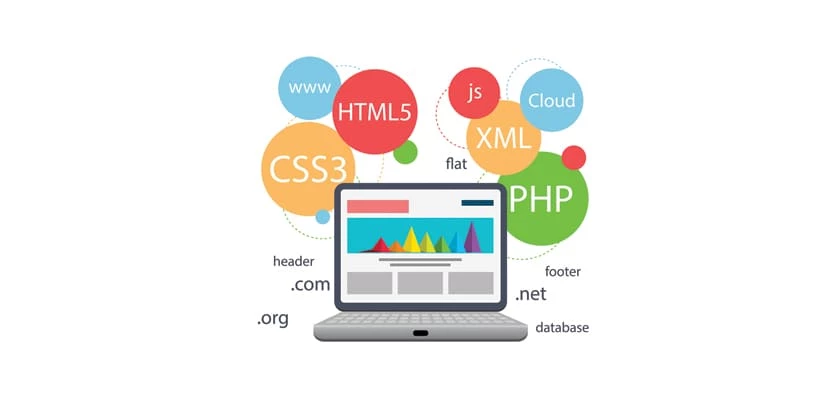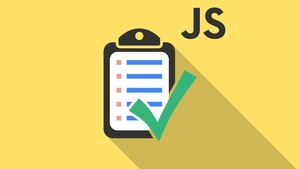This plan includes
- Instant access to 11,000+ online courses
- Play & Pause Course Videos
 HD Video Recorded Lectures
HD Video Recorded Lectures- Learn on Mobile/PC/Tablet
- Quizzes and Real Projects
- Lifetime Course Certificate
- Instructor Chat Support
- Cancel Plan Anytime
What you'll learn?
- Understanding Node NPM, CLI , VS ,Typescript and Webpack build tool.
- Understanding Module and Component architecture in angular. Understanding important properties of component like templateurl , styleurl and selector.
- Understanding configuration files like Angular json , tsconfig json , package json file and semantic versioning.
- Understanding Routing ,router-outlet , routeLink and Lazy loading
- Angular validation using formgroup , formcontrols and validators.
- Creating loosely coupled architecture using DI ( Dependency Injection) and providers.
- Implementing reusable user controls using input , output and event emitters.
- Making http calls , understanding httpclient , http interceptors and fixing double entry problem
Course Overview
This tutorial is made in the latest version of Angular i.e. Angular 7.This series covers the following topics.
Chapter 1 :- Node and NPM
Chapter 2 :- Running first app & Angulr CLI
Chapter 3 :- VS Code editor.
Chapter 4 :- TypeScript
Chapter 5 :- CLI project folder structure
Chapter 6 :- The config JSON files
Chapter 7 :- ng serve vs ng build
Chapter 8 :- Angular the binding framework
Chapter 9 :- Component and Modules
Chapter 10 :- Expression , Decorators and TemplateURL
Chapter 11 :- Declaration and BootStrap in Modules
Chapter 12 :- The main.ts file for module startup
Chapter 13 :- Index.html and the selector tag
Chapter 14 :- Polyfills
Chapter 15 :- Webpack :- Packaging and deploying
Chapter 16 :- Vendor.js and Runtime.js
Chapter 17 :- Angular File naming Convention
Chapter 18 :- Creating Customer UI
Chapter 19 :- Creating Customer Model
Chapter 20 :- Consuming model in component
Chapter 21 :- ngModel , One way and Two way binding
Chapter 22 :- Expressions
Chapter 23 :- Understanding and Intrepeting Errors
Chapter 24 :- FormsModule
Chapter 25 :- *ngForLoop
Chapter 26 :- package.lock.json and versioning
Chapter 27 :- Using source code of the tutorial.
Chapter 28 :- Thinking Uniform , Thinking Master Pages
Chapter 29:- Creating Angular UI and its components.
Chapter 30 :- Organizing project folders, modules & components.
Chapter 31 :- Masterpage and selector
Chapter 32 :- Grouping components in to Modules.
Chapter 33 :- Understanding UI loading in selector.
Chapter 34 :- Routing and Routing collection
Chapter 35 :- router-outlet and routerLink
Chapter 36 :- RouterModule and loading routes in Angular.
Chapter 37 :- Understanding the flow of Angular with routing.
Chapter 38 :- Performance issues due to eager loading.
Chapter 39 :- Implementing Lazy loading
Chapter 40 :- Dividing project in to self contained Angular modules.
Chapter 41 :- Self contained routes for self contained modules.
Chapter 42 :- loadChildren :- The heart of lazy loading
Chapter 43:- Understanding path structure for folders and loadChildren.
Chapter 44:- forRoot and forChild
Chapter 45:- Multiple Modules , Multiple builds and Multiple outputs.
Chapter 46:- CommonModule for Lazy Loading
Chapter 47:- Seeing the physical separate modules in the "dist" folder.
Chapter 48:- Revising Angular architecture with Lazy routing
Chapter 49 :- Validation object model.
Chapter 50 :- Appropriate place to put validations
Chapter 51 :-Formgroup , FormControl , Validators and FormBuilder
Chapter 52 :- Using Angular validation :- The CCC process.
Chapter 53 :- Creating validations
Chapter 54 :- Applying validations to the UI
Chapter 55 :- Checking validation status
Chapter 56 :- ReactiveForms
Chapter 57 :- ngModelOption standalone
Chapter 58 :- Display errors for individual validations.
Chapter 59 :- The dirty flag.
Chapter 60 :- Centralizing validation code for reusability.
Chapter 61: - Definition of a good architecture
Chapter 62: - Concrete classes and tight coupling
Chapter 63: - Provider - provides things to component.
Chapter 64: - Creating providers: - Provide & UseClass
Chapter 65: - Interfaces issues with Angular DI
Chapter 66: - Finally understanding Dependency Injection
Chapter 67: - Seeing the actual fruits of Dependency Injection
Chapter 68: - Centralized and Conditional DI
Chapter 69: - Injector and tokens - Conditionnal DI
Chapter 70: - Dynamic collections
Chapter 71: - Revising Angular DI architecture
Chapter 72 :- Defining a user control
Chapter 73 :- Interactions :- Input, output and event emitters
Chapter 74 :- Creating user control and its components
Chapter 75 :- Creating user control component and importance of selector
Chapter 76 :- The @input decorator
Chapter 77 :- Stters and custom component naming convention
Chapter 78 :- Creating the Grid UI of the user control
Chapter 79 :- Defining output and event emitters
Chapter 80 :- Understanding the user control flow
Chapter 81 :- Importing and running the user control
Chapter 82 :- Debugging and watching the full flow.
Chapter 83 :- Json-server , the fake webserver
Chapter 84 :- Configuring json-server & db.json.
Chapter 85 :- importing and creating http component object
Chapter 86:- Making HTTP Post calls and the subscribe method.
Chapter 87 :- Import HTTP Module at the module level.
Chapter 88 :- Implementing DTO( Data transfer objects)
Chapter 89 :- Lambdas and Callback
Chapter 90 :- Angular HTTP Client.
Chapter 91 :- Using HttpClient
Chapter 92 : Simplicity of HttpClient.
Chapter 93:- Interceptors in HttpClient
Chapter 94:- The double data post
Chapter 95 :- Defining the scope of the tutorial.
Chapter 96 :- Using Angular template and its limitation
Chapter 97 :- Respecting individual build and compilation.
Chapter 98 :- MVC wwwroot folder and Angular
Chapter 99 :- Issues with ng serve and integration
Chapter 100 :- Bootstrapping through MVC
Chapter 101 :- Deployurl concept.
Chapter 102 :- Integrating Webapi with Angular Http
Chapter 103 :- Debugging Angular and MVC
Chapter 104 :- Ahh the camel case and pascal case issue
Chapter 105:- Integrating Grunt with Task runner explorer
Chapter 106 :- Grunt configuration using appsettings.json
Chapter 107 :- Prebuild and Postbuild style
Chapter 108 :- Double tooling VS code and Visual studio
Chapter 109 :- Create new project using ng new command.
Chapter 110 :- Copy the code in to newly created projects.
Chapter 111 :- Run ng serve , fix errors http to httpclient
Chapter 112 :- Test and you are all set
Chapter 113 :- Integration testing vs Unit Testing
Chapter 114 :- Black Box vs White Box
Chapter 115 :- Jasmine and Karma
Chapter 116 :- Understanding Jasmine syntaxes , BDD , Describe and it.
Chapter 117 :- BeforeEach,BeforeAll,AfterEach and AfterAll
Chapter 118 :- The TestBed API
Chapter 119 :- Angular loading flow.
Chapter 120 :- Fixture the baseline.
Chapter 121 :- DebugElement , componentInstance and nativeElement
Chapter 122 :- Assertion - expect , tobeTruthy , toEqual
Chapter 123 :- Synching DOM's DetectChanges.
Chapter 124 :- QuerySelectors.
Chapter 125 :- Running Angular test
Chapter 126 :- Writing a complex unit test for the Customer screen
Pre-requisites
- Basic JavaScript and HTML knowledge needed.
- Basic programming knowledge is needed.
- You do not need to know any old Angular version of Angular.
Target Audience
- This course is for people who are new to Angular and want to start from basic and go to advanced level.
Curriculum 13 Lectures 08:11:11
-
Section 1 : Lab 1: - Running your first Angular Application.
- Lecture 2 :
- Question 1 :- Can we have multiple components in Startup?
-
Section 2 : Lab 2: - Creating the Customer UI, Model and Component.
- Lecture 1 :
- Lab 2: - Creating the Customer UI, Model and Component.
-
Section 3 : Lab 3: - Angular Routing: Creating Master pages and navigations
- Lecture 1 :
- Lab 3: - Angular Routing: Creating Master pages and navigations
-
Section 4 : Lab 4: - Increasing Performance using Lazy Loading.
- Lecture 1 :
- Lab 4: - Increasing Performance using Lazy Loading.
-
Section 5 : Lab 5: - Implement Validations in Angular.
- Lecture 1 :
- Lab 5: - Implement Validations in Angular.
-
Section 6 : Lab 6: - Angular Dependency Injection.
- Lecture 1 :
- Lab 6: - Angular Dependency Injection.
-
Section 7 : Lab 7:- Input,output and event emitters.
- Lecture 1 :
- Lab 7:- Input,output and event emitters.
-
Section 8 : Lab 8:- Make HTTP calls using Angular Components.
- Lecture 1 :
- Lab 8:- Make HTTP calls using Angular Components.
-
Section 9 : Lab 9: - Integrating MVC Core with Angular using Visual Studio.
- Lecture 1 :
- Lab 9: - Integrating MVC Core with Angular using Visual Studio.
-
Section 10 : Lab 10:- Migratting Angular 6 to Angular 7
- Lecture 1 :
- Lab 10:- Migratting Angular 6 to Angular 7
-
Section 11 : Lab 11 :- Unit Testing in Angular using Jasmine & Karma.
- Lecture 1 :
- Lab 11 :- Unit Testing in Angular using Jasmine & Karma.
-
Section 12 : Question 1 :- Can we have multiple components in Startup?
- Lecture 1 :
- Question 1 :- Can we have multiple components in Startup?
Our learners work at
Frequently Asked Questions
-
How do i access the course after purchase?
It's simple. When you sign up, you'll immediately have unlimited viewing of thousands of expert courses, paths to guide your learning, tools to measure your skills and hands-on resources like exercise files. There’s no limit on what you can learn and you can cancel at any time. -
Are these video based online self-learning courses?
Yes. All of the courses comes with online video based lectures created by certified instructors. Instructors have crafted these courses with a blend of high quality interactive videos, lectures, quizzes & real world projects to give you an indepth knowledge about the topic. -
Can i play & pause the course as per my convenience?
Yes absolutely & thats one of the advantage of self-paced courses. You can anytime pause or resume the course & come back & forth from one lecture to another lecture, play the videos mulitple times & so on. -
How do i contact the instructor for any doubts or questions?
Most of these courses have general questions & answers already covered within the course lectures. However, if you need any further help from the instructor, you can use the inbuilt Chat with Instructor option to send a message to an instructor & they will reply you within 24 hours. You can ask as many questions as you want. -
Do i need a pc to access the course or can i do it on mobile & tablet as well?
Brilliant question? Isn't it? You can access the courses on any device like PC, Mobile, Tablet & even on a smart tv. For mobile & a tablet you can download the Learnfly android or an iOS app. If mobile app is not available in your country, you can access the course directly by visting our website, its fully mobile friendly. -
Do i get any certificate for the courses?
Yes. Once you complete any course on our platform along with provided assessments by the instructor, you will be eligble to get certificate of course completion.
-
For how long can i access my course on the platform?
You require an active subscription to access courses on our platform. If your subscription is active, you can access any course on our platform with no restrictions. -
Is there any free trial?
Currently, we do not offer any free trial. -
Can i cancel anytime?
Yes, you can cancel your subscription at any time. Your subscription will auto-renew until you cancel, but why would you want to?
Instructor

0 Course Views
Courses



 Tech & IT
Tech & IT
 Business
Business
 Coding & Developer
Coding & Developer
 Finance & Accounting
Finance & Accounting
 Academics
Academics
 Office Applications
Office Applications
 Art & Design
Art & Design
 Marketing
Marketing
 Health & Wellness
Health & Wellness
 Sounds & Music
Sounds & Music
 Lifestyle
Lifestyle
 Photography
Photography
















